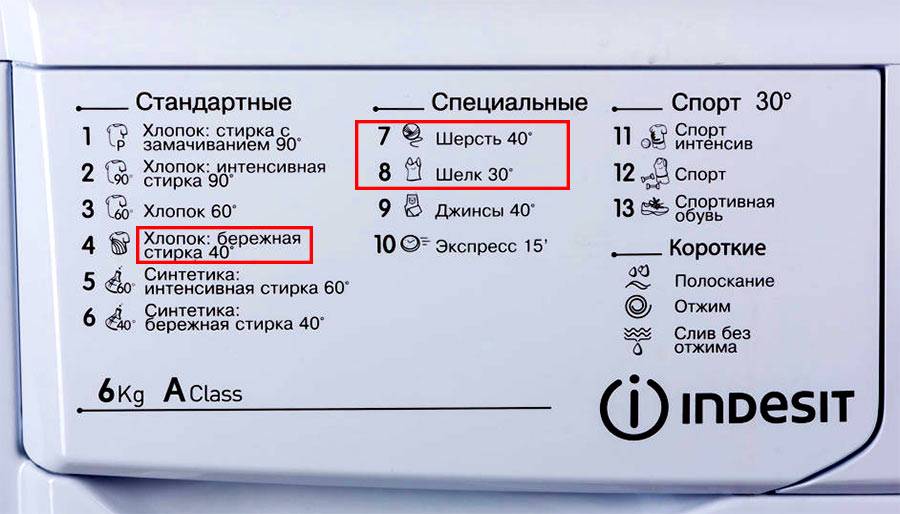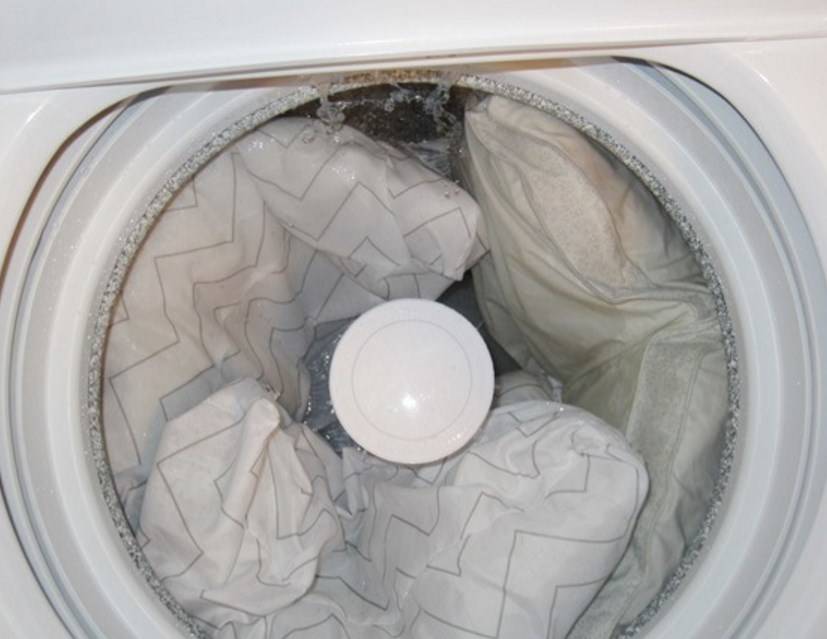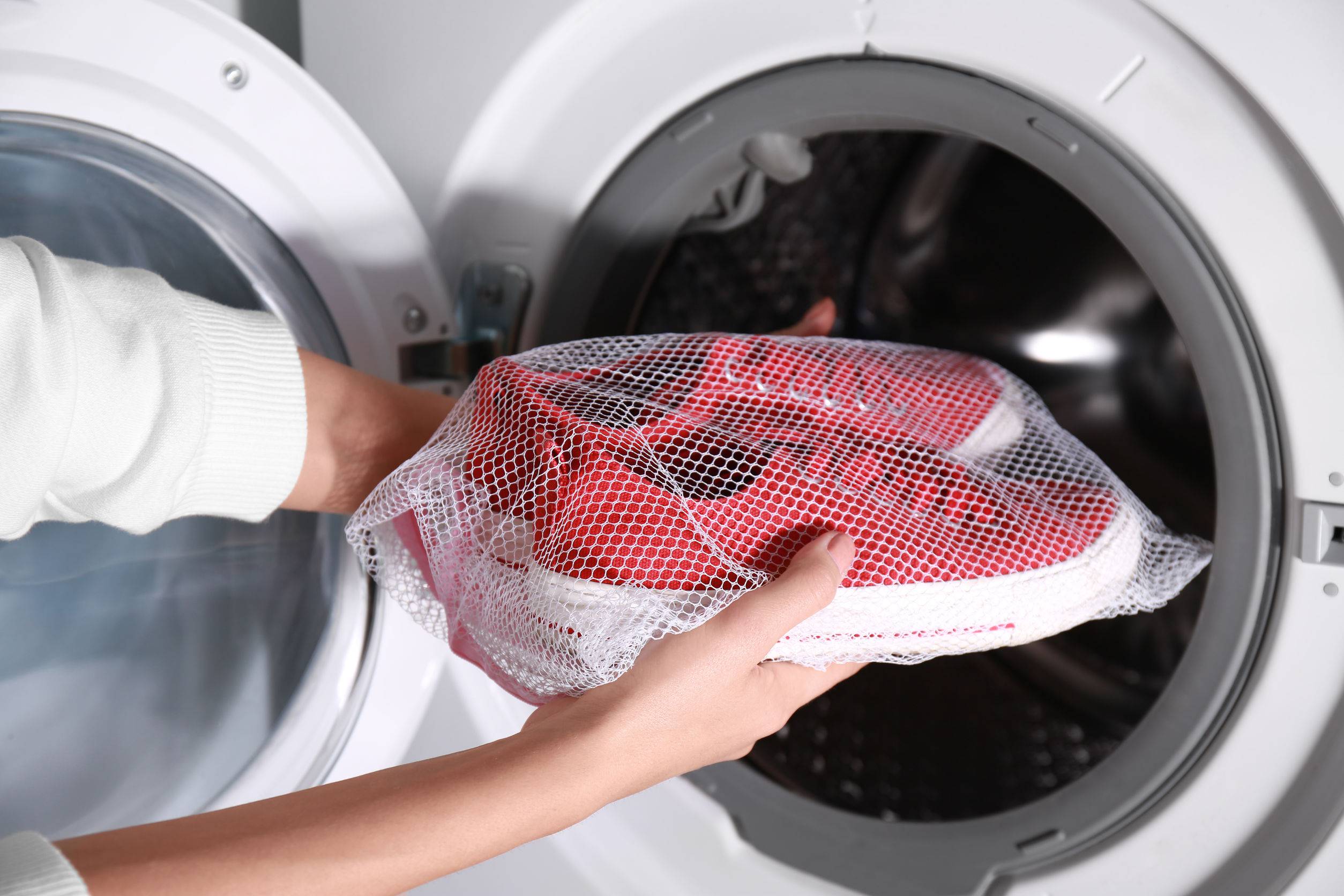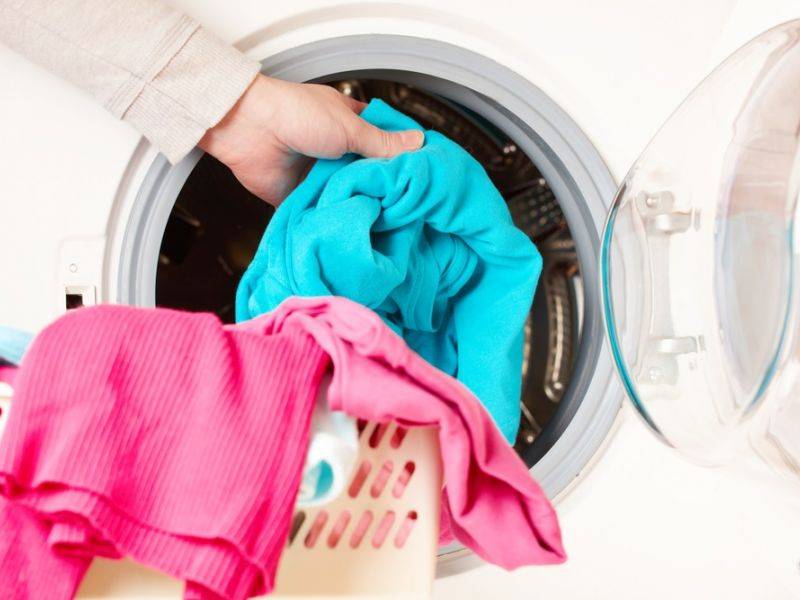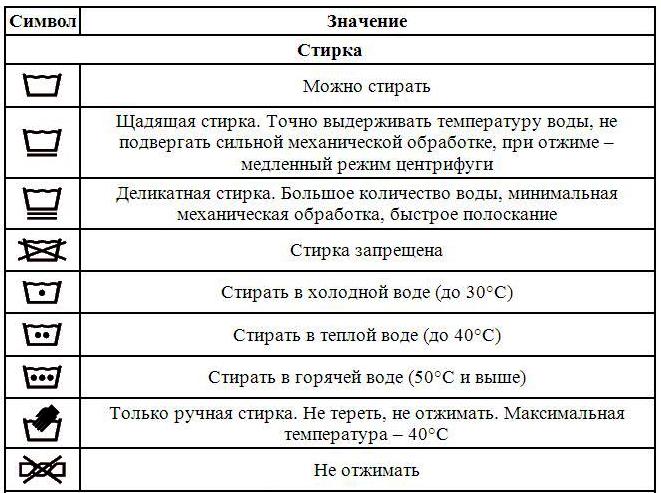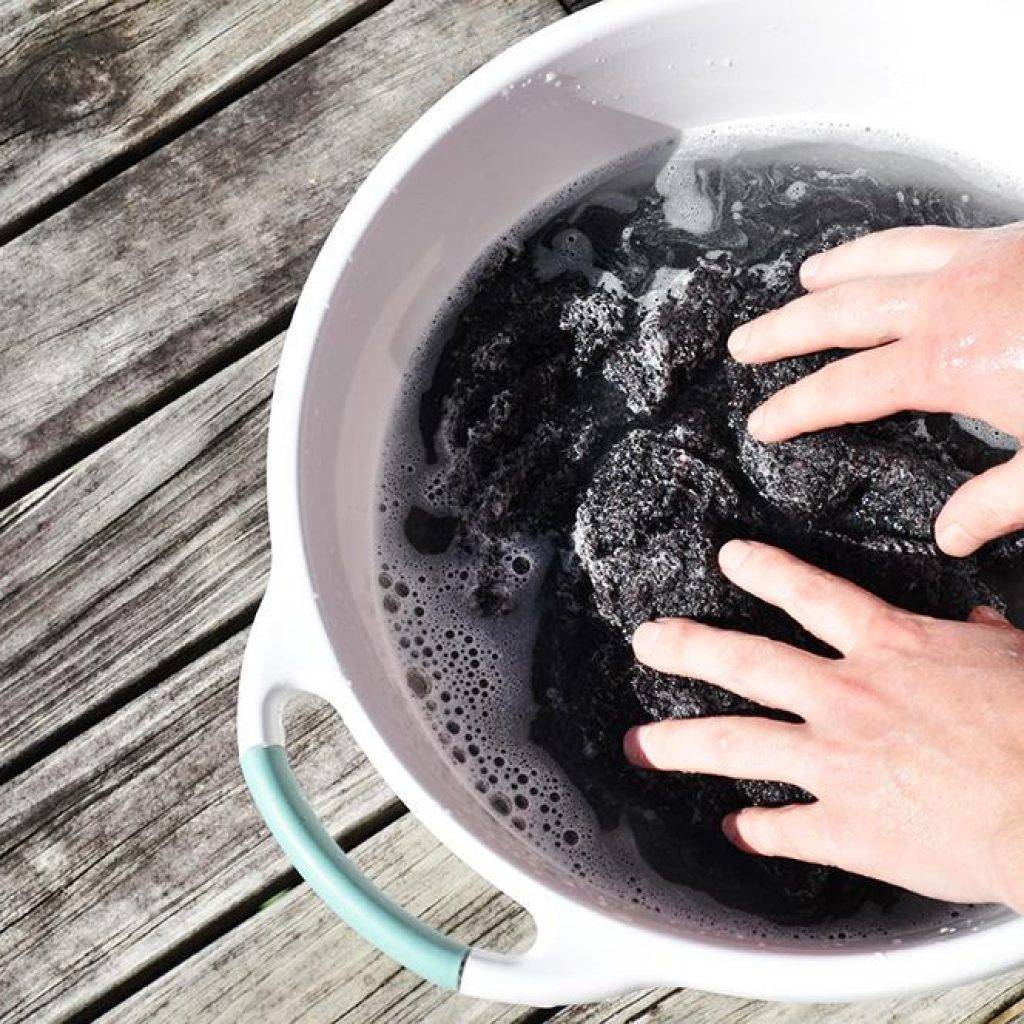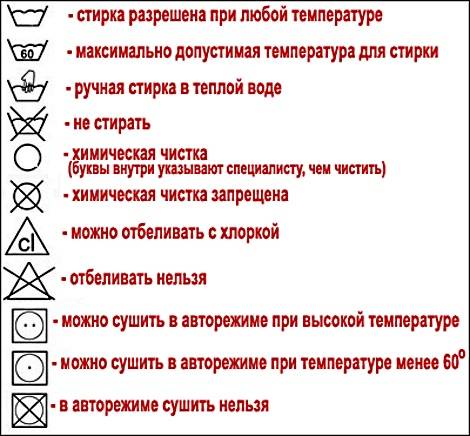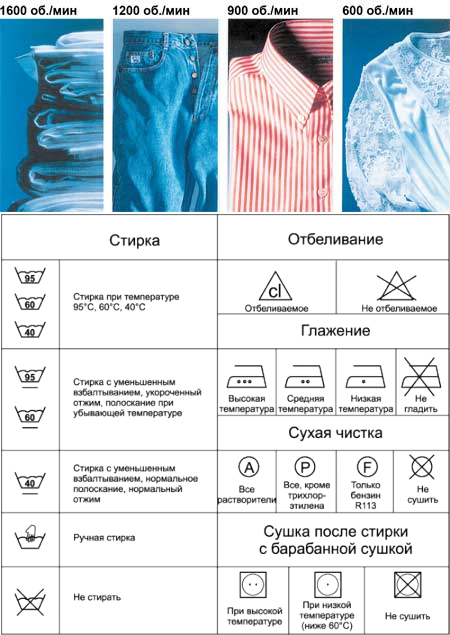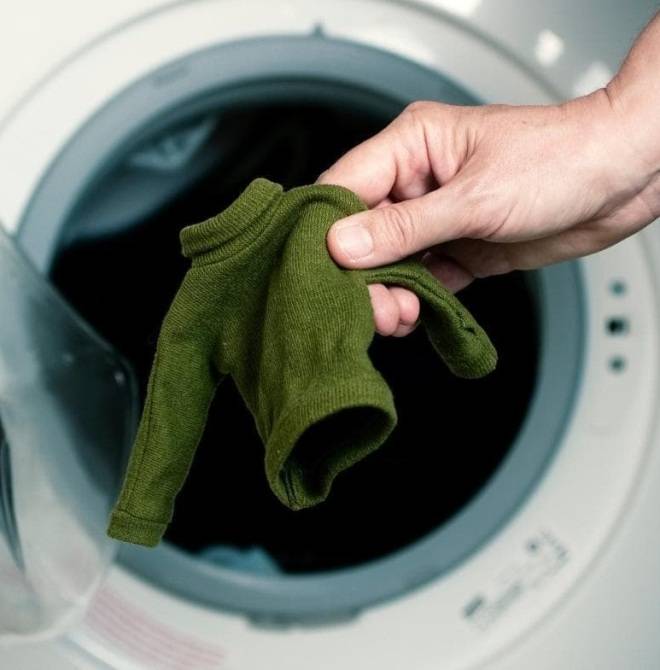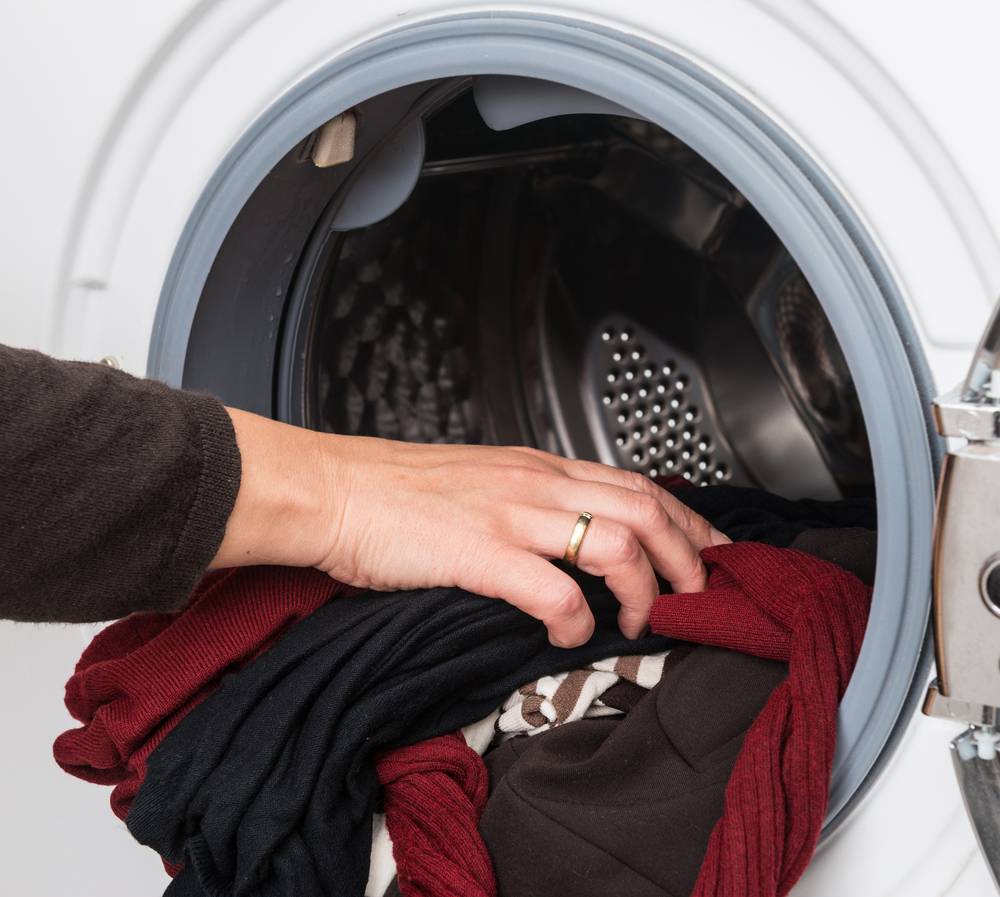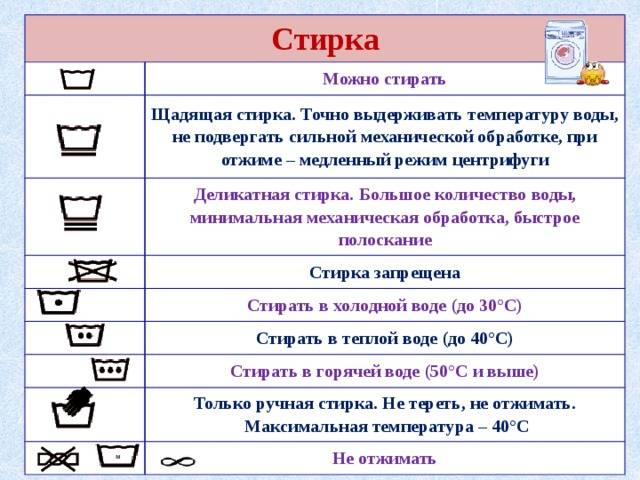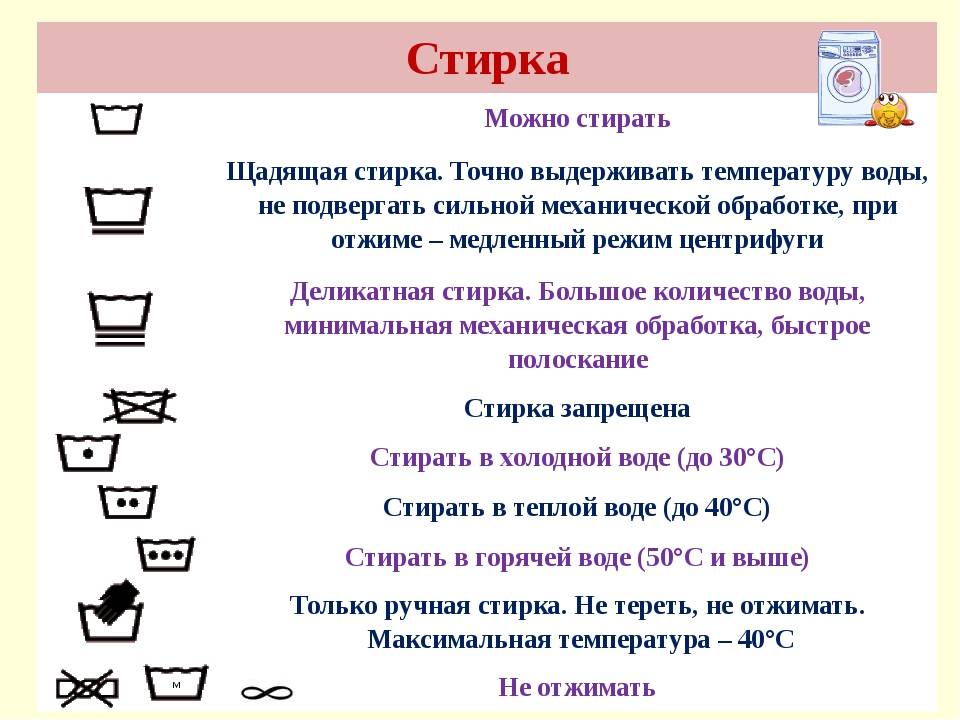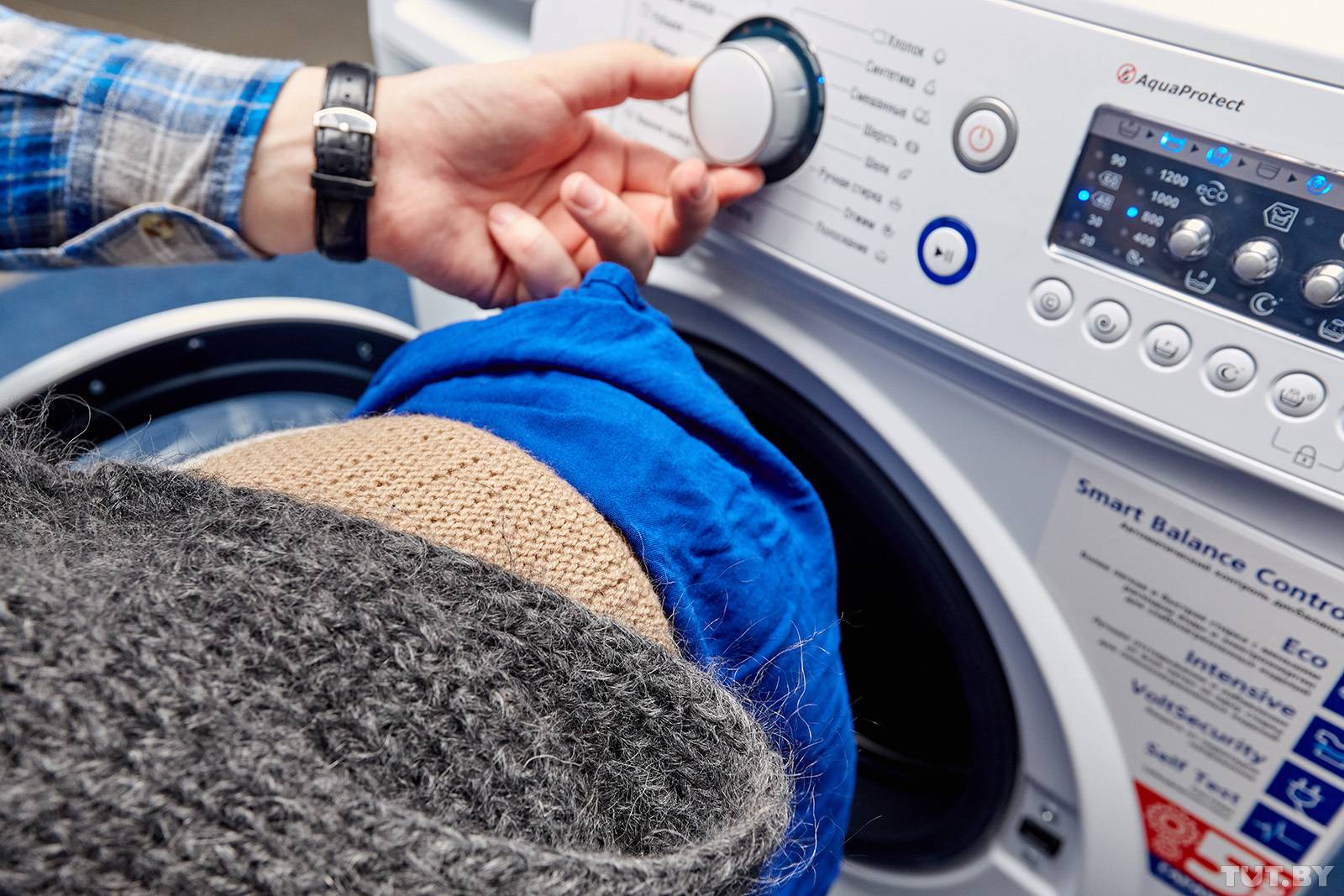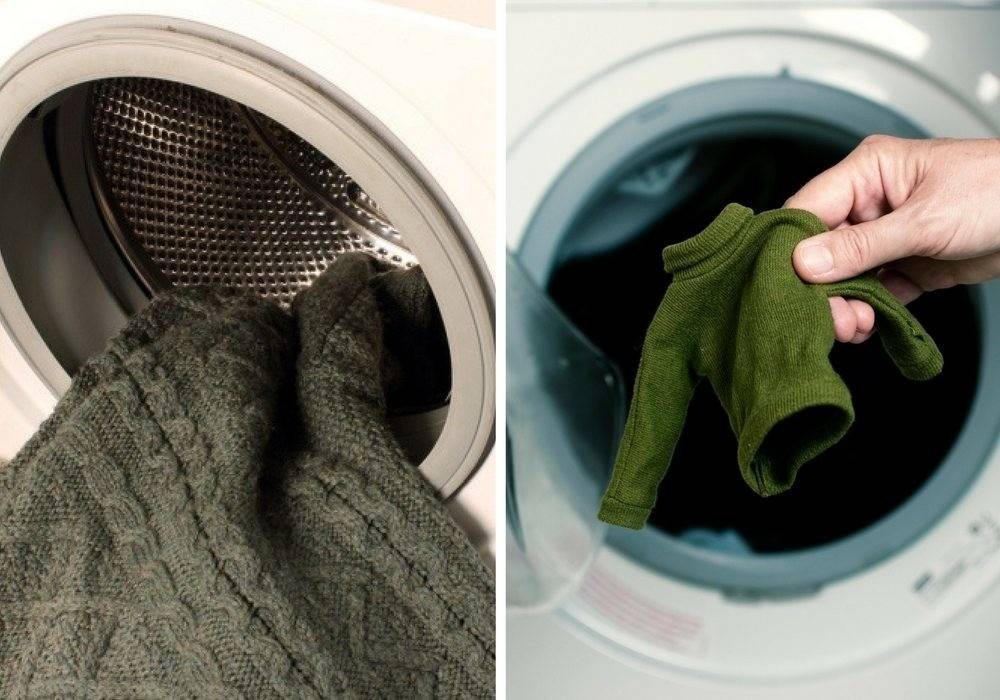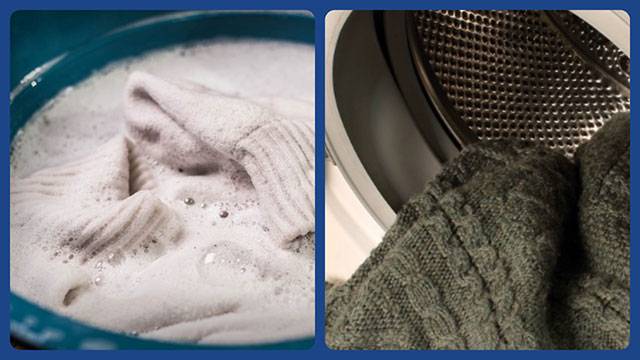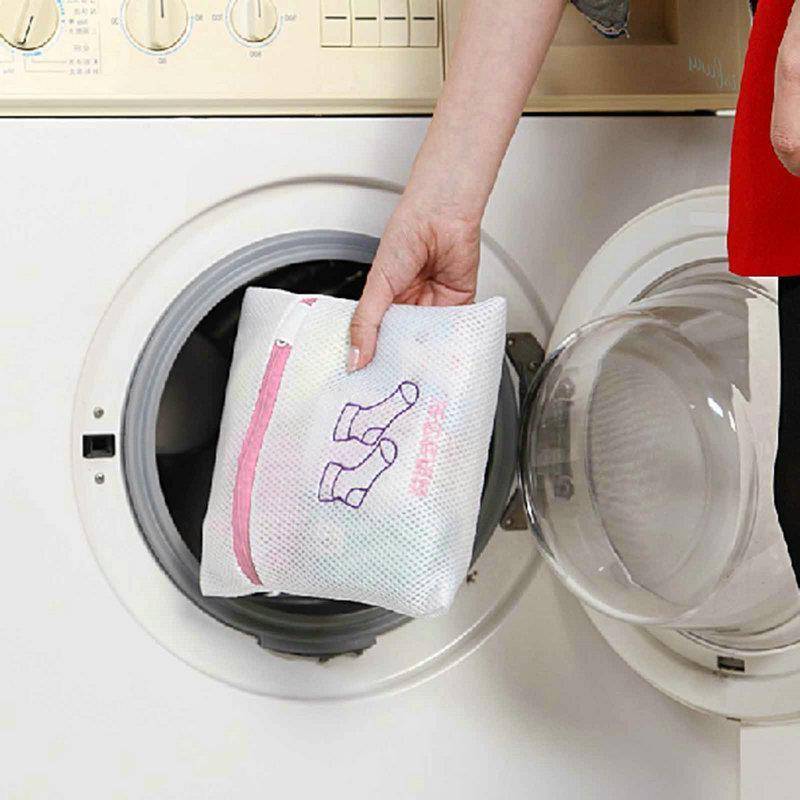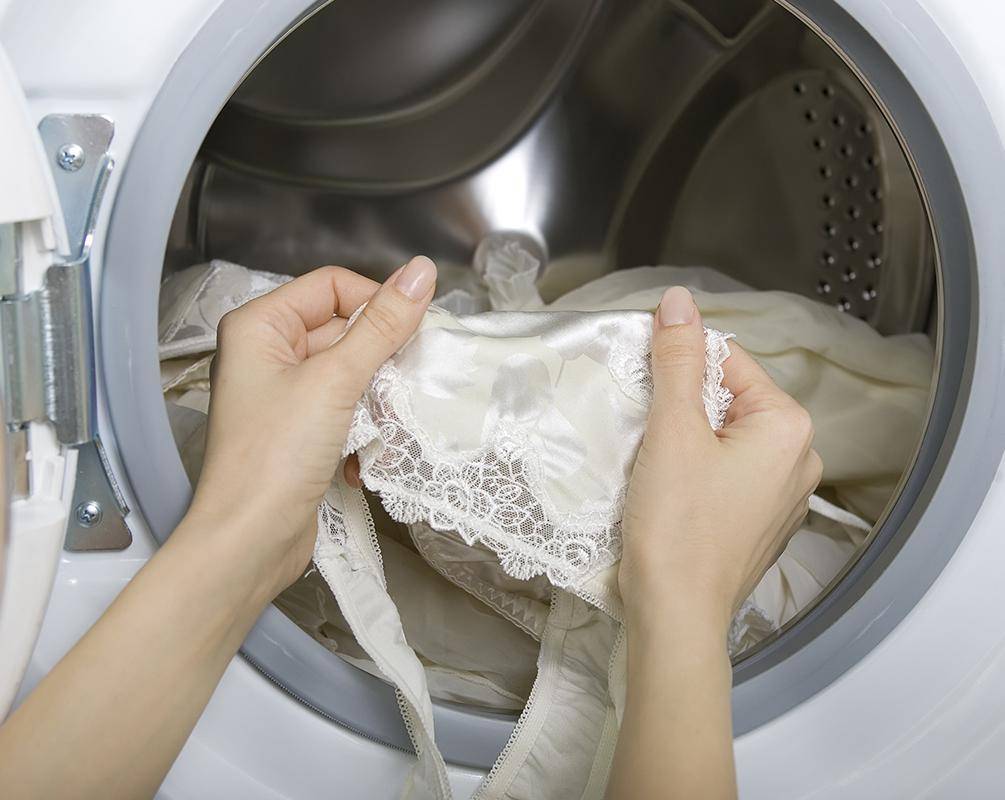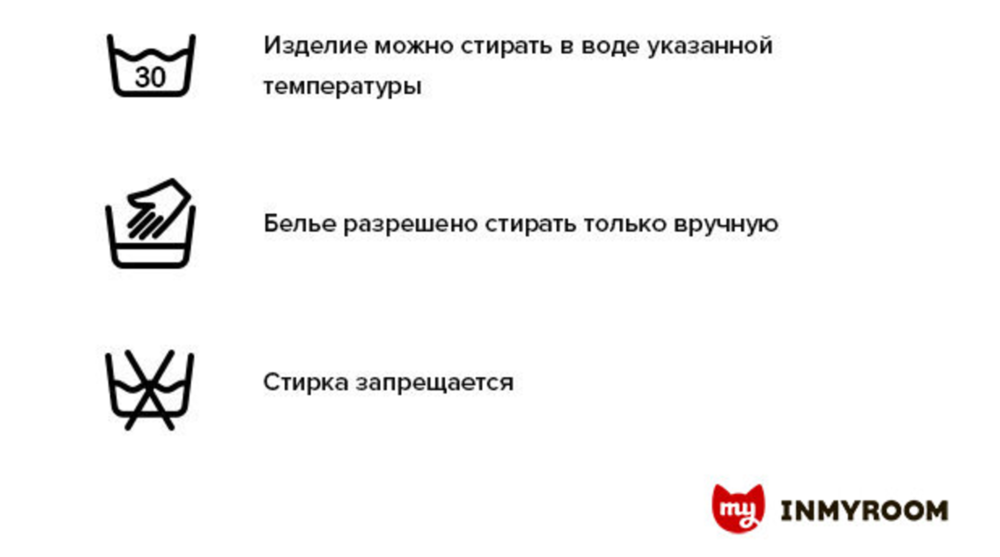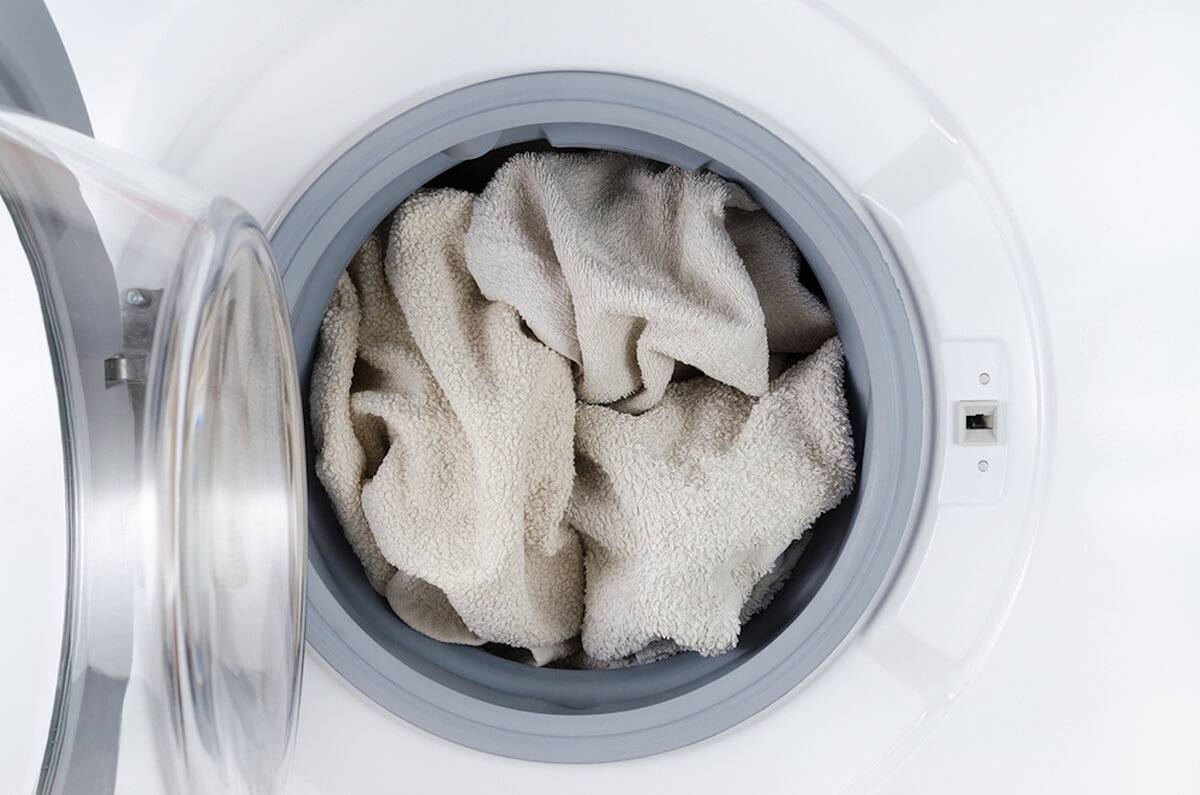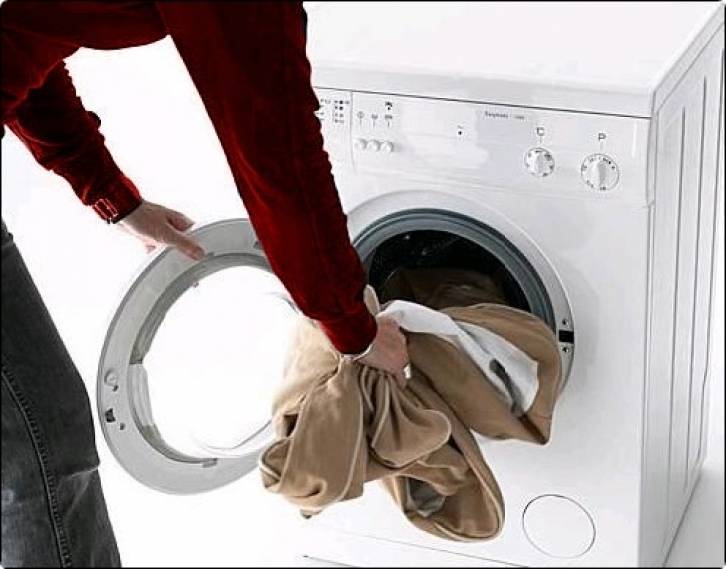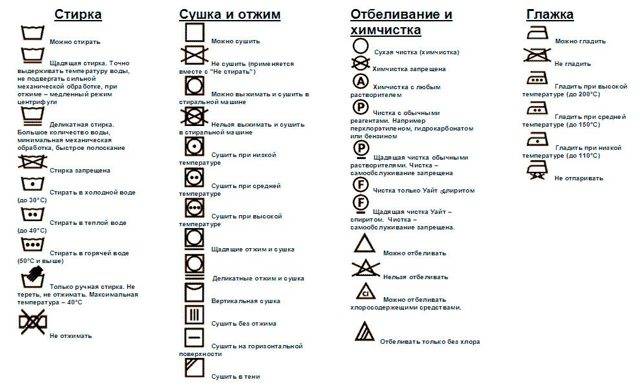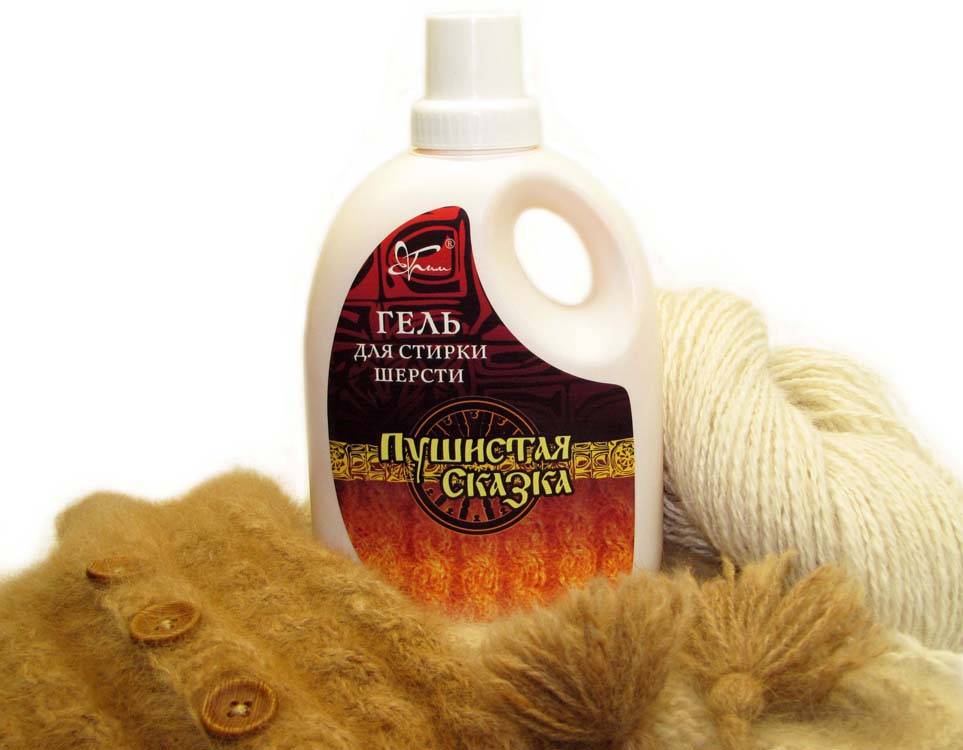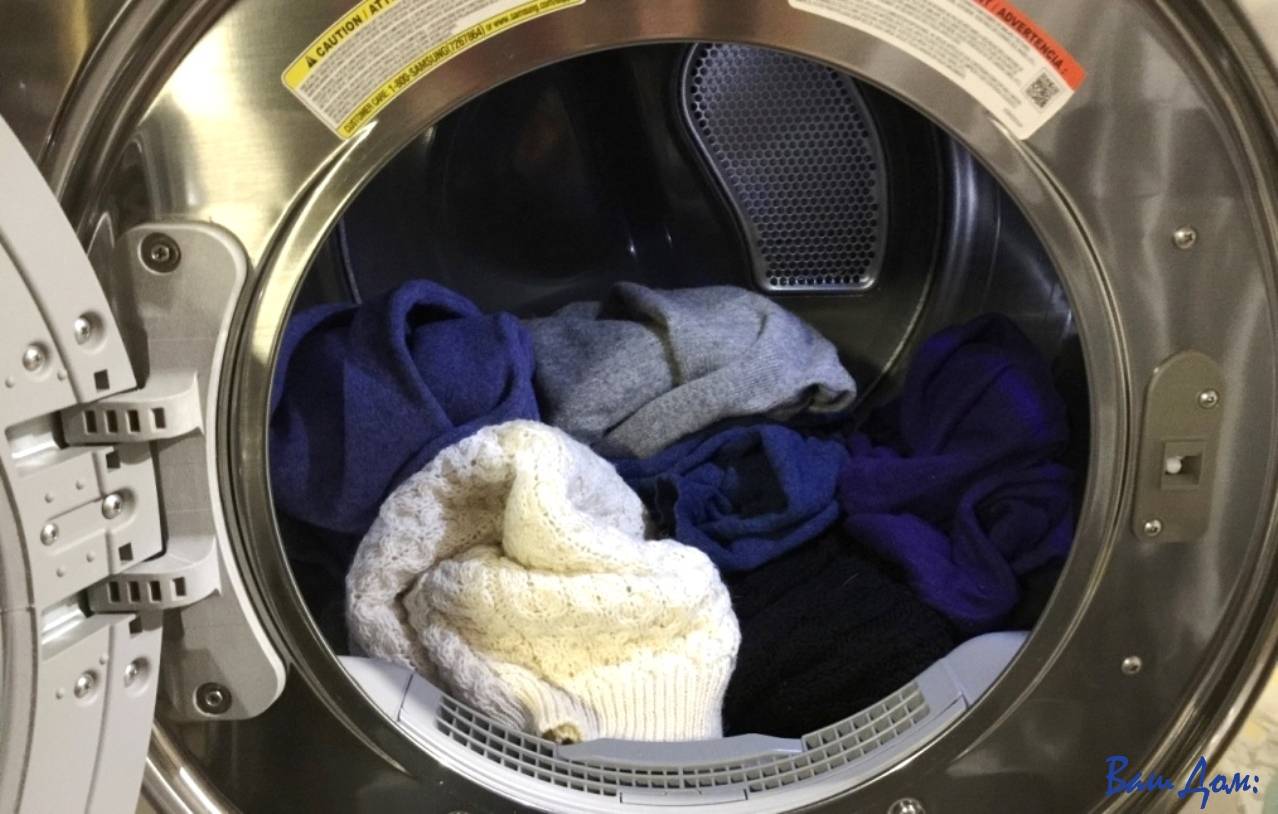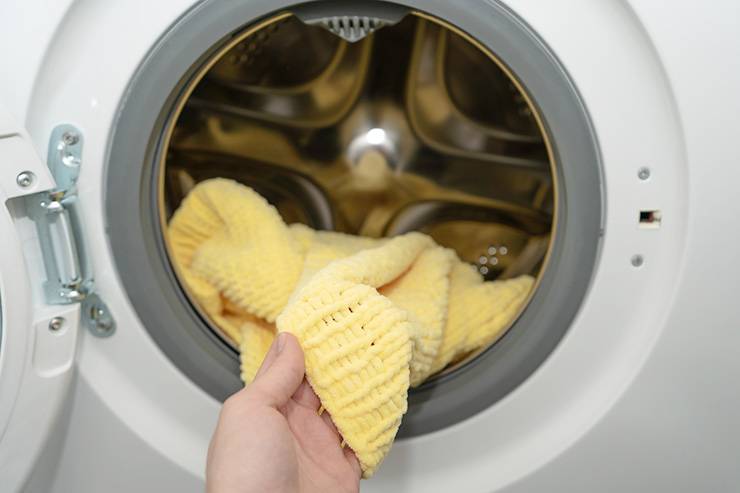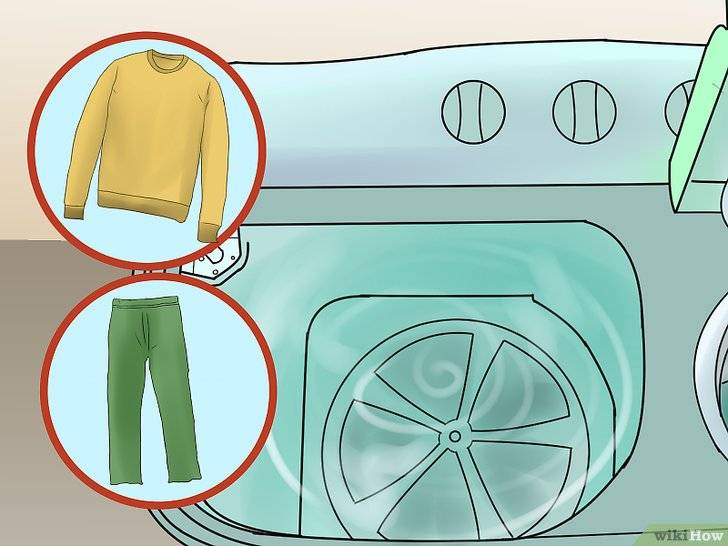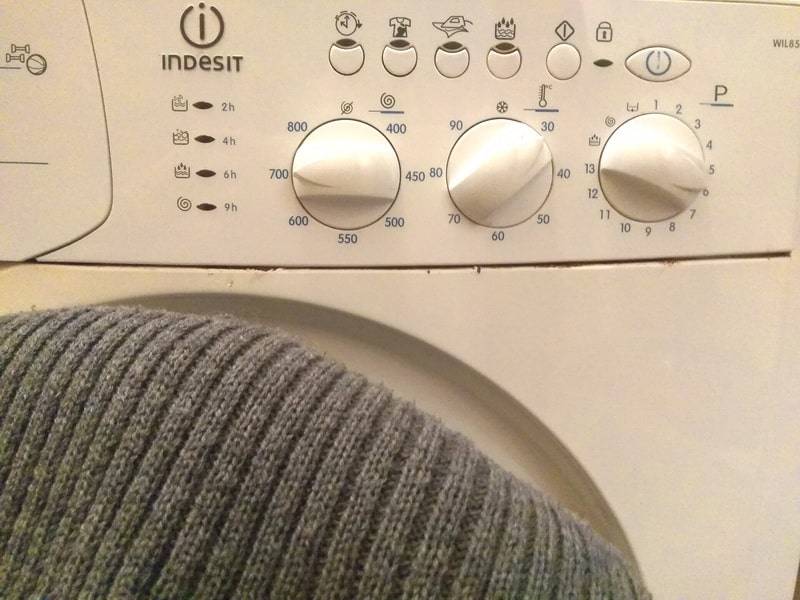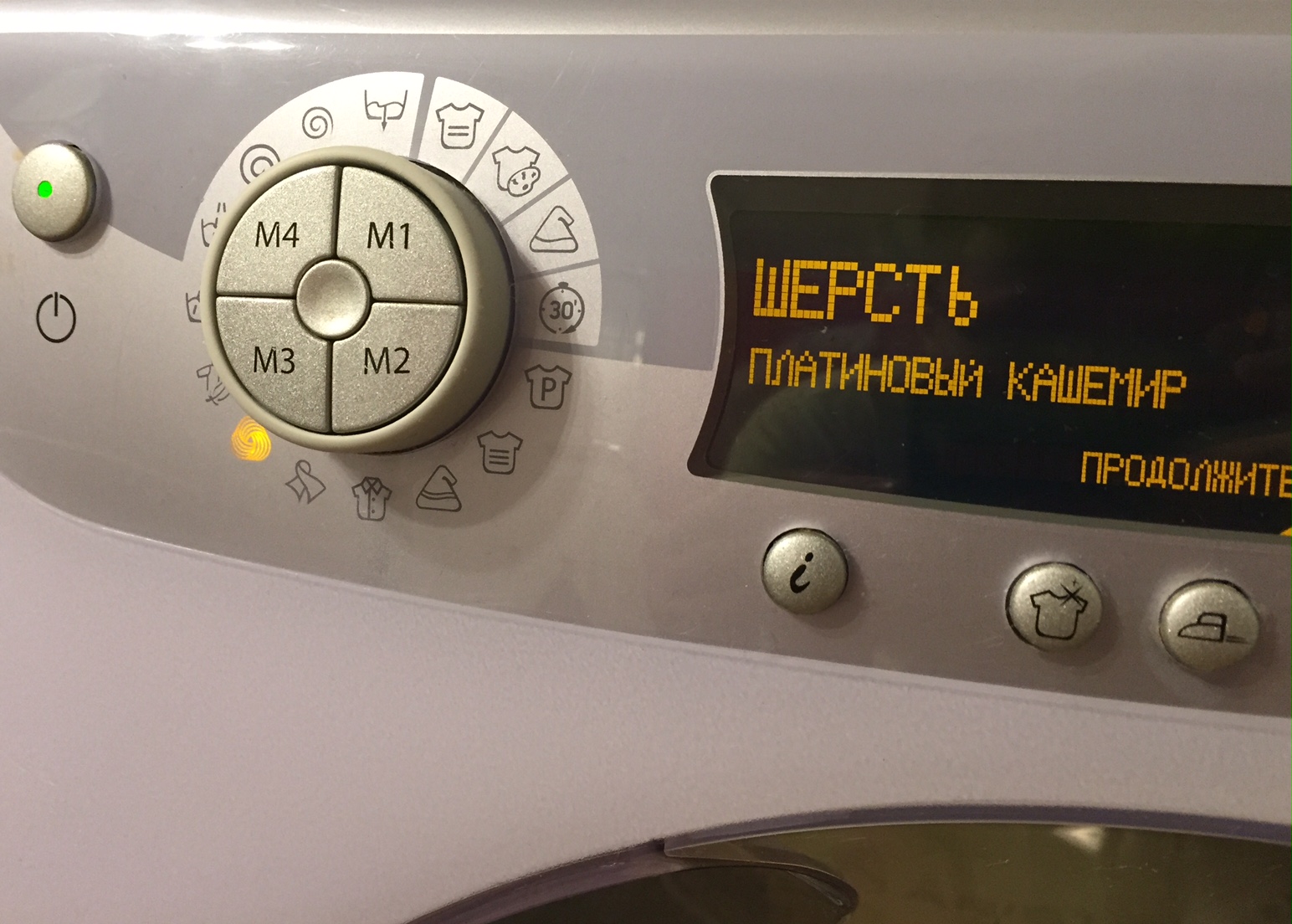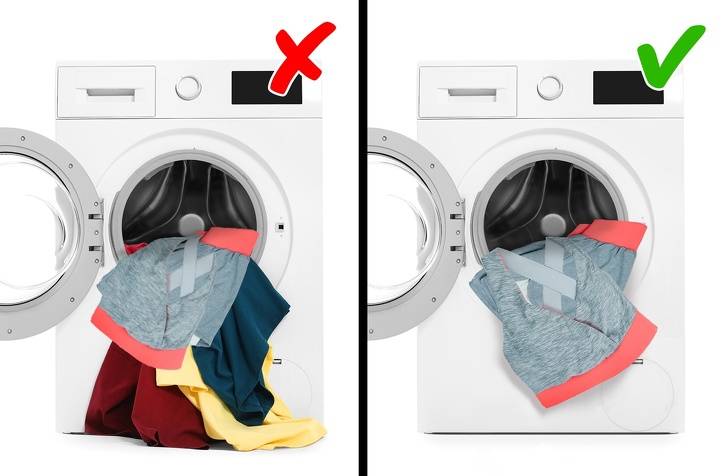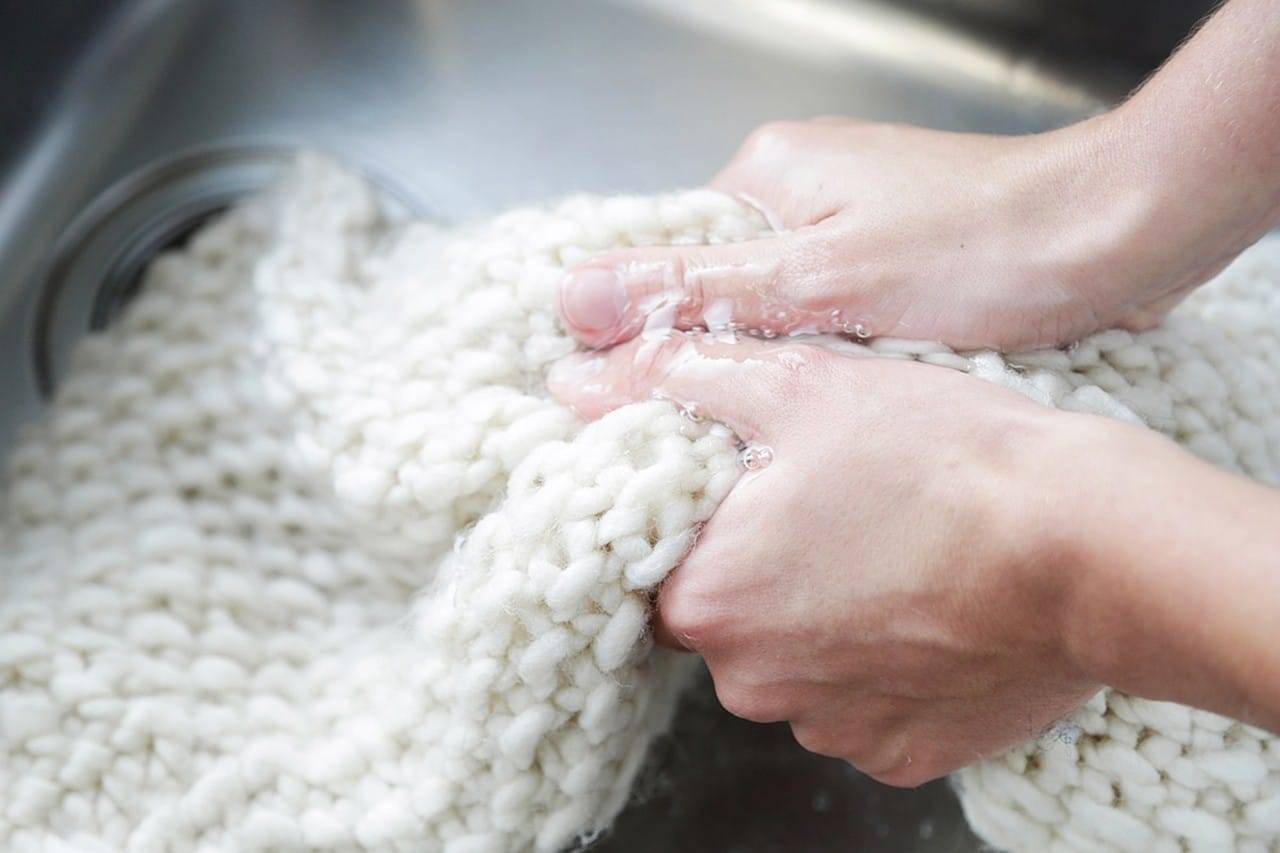What to do if the wool shrinks after washing
If you notice that the product is village - do not panic. It is worth trying to fix this situation yourself. This requires:
- Unscrew the product, spray it with water, stretching it a little with your hands (do not overdo it), and leave it for a while. If necessary, repeat the procedure;
- Soak the product and dry it using methods already known to us.
If the situation is completely neglected, then you can take more drastic measures:
- Fill the bath with warm water (not cold, and not higher than 30 degrees);
- Stir in a little wool conditioner;
- Leave on for 15 minutes;
- Take out a thing, remove moisture with a clean towel;
- Spread out, leaving to dry;
- Every 20 minutes, slightly pull the thing to the sides (try evenly!). Or - to put on a thing on yourself, but this is very unpleasant.
If this did not help, then you can go to the most extreme measures.
But, it is important to understand that the risk of completely ruining your favorite thing increases. We need:
- Dissolve a little grated soap in water;
- Add 1 tbsp to the mixture. l. turpentine and 3 tbsp. l. ammonia;
- Soak the thing in the resulting solution, leaving it for 24 hours;
- Repeat the stretching method described above.
Not every time it turns out to bring back to life a damaged thing. Therefore, you should always carefully study the information indicated both on the label and on the detergent.
Useful Tips
There are a number of recommendations, received as a result of the life experience of housewives, on how to properly care for woolen things so that they retain their original appearance for a long time. Here is some of them:
- Do not dry woolen items in or near the kitchen. They absorb odors well.
- Sweat and other unpleasant odors are easily eroded from wool, so it is recommended to ventilate it as often as possible in the fresh air in the yard or by hanging it on the balcony.
- Do not use batteries or other heat sources for drying. At the same time, the quality of the fabric can deteriorate greatly, and the thing will become unpleasant to the touch.
- For long-term storage it is recommended to use vacuum bags. They will protect the item from insects and help to maintain its shape until the next use.
- In the closet where clothes made from natural fabrics are located, you need to put anti-moth products, as it loves wool very much and will quickly spoil it.
- If the item is new and has a little dirt, then it is best to dry-clean it if possible. So there is a better chance that it will retain its shape, size and color.
- The use of harsh bleaches is not recommended. They can thin the fibers and damage the fabric.
Comment! Some woolen products are not ironed after drying. But there are those whose appearance requires ironing. To do this, turn the product inside out. You can use the steam iron or a damp cloth.
Storage advice
It is best to place them on a shelf rather than hanging them on a hanger to avoid stretching.
The main problem with wool storage is moths. Modern chemical agents will help to resist it. But they can cause allergies.
That is, it is strictly forbidden to place such products in the cabinet. The remedy is to bait the insects away from the closet.
But it's best not to experiment with this method at all. Provide airing every six months. But choose not too hot and not frosty weather for this.
Before sending a woolen item to the wash, you should carefully examine it for stains. If there are any, then they must be removed with hydrogen peroxide and vinegar - these funds have no effect on the condition of the woolen threads, so you can safely use them. If no stains are found, then the next step will be directly washing - it can be hand-made and in a washing machine.
This is the best option for washing wool - the material should not be strongly squeezed, twisted, and generally made any excessive efforts (for example, rub it thoroughly). The water temperature for washing wool should be no higher than 30 degrees, the same temperature regime should be observed when rinsing things.
As a detergent, you need to use those products that are designed specifically for woolen items:
- firstly, the result will be the absence of "pellets" on the surface of woolen clothing;
- secondly, you can be sure that your favorite sweater is not deformed;
- thirdly, the wool will become soft and will not fluff with all its fibers.
A good option for hand washing is the Vorsinka washing powder, designed for working with woolen and delicate fabrics. The manufacturer of this product "Nevskaya kosmetika" assures that this product has all the necessary properties, and in addition, it retains the rich color of the woolen product.
It is also necessary to rinse woolen things carefully, you cannot squeeze out such clothes, you can only wrap it in a towel and squeeze it slightly. It is necessary to dry woolen things laid out on a flat, hard surface, you cannot hang them on "hangers" or on a rope - the deformation of the product is guaranteed.
Please note: experts do not recommend using bleaches for washing woolen items. Even if there are hard-to-remove stains on your clothes, you just need to find a way to get rid of them without the use of aggressive products.
Previously, for example, wool was washed in a solution of mustard powder - at least there is a chance to preserve the integrity of the wool thing after experiments.
When washing woolen items in an automatic machine, you do not need to use an air conditioner, especially since the aromatization function is incorporated by the manufacturer in the detergent. But it is worth paying close attention to its choice - it is desirable that it contains no aggressive chemical components and powerful fragrances.
Washing wool products will go smoothly if you apply the following tips in practice:
In the process of washing and rinsing, a sharp change in the temperature of the water must not be allowed, since a woolen thing can respond to it with deformation. Conditioner can be used when washing wool. It will make the thing softer and contribute to fluffing the threads, and giving the thing softness.
During the drying process, you should pay attention so that the thing does not stretch. If necessary, it should be lightly gathered with the palms, restoring its shape
Most woolen knitted items are not ironed, as such an operation can ruin the texture of the material. For some types of products, ironing is strictly prohibited. There should be information about this on the label. Any vigorous physical impact on the coat is prohibited. White woolen clothes are washed separately from the rest, even if the clothes do not fade. This is due to the fact that during joint processing, colored villi can adhere to a white product, which will be difficult and time-consuming to remove, and without this, the appearance will be spoiled. Proper storage is one of the components of caring for things. Woolen clothing should be kept neatly folded. In this case, it is necessary to take care of special remedies for moths. During long-term storage, things must be periodically taken out, ventilated and rearranged. It is impossible to lather the product itself or pour washing gel on it. Preliminary dilution of all preparations in water is mandatory.
How to freshen up woolen garments without washing: tips and tricks?
There are some simple guidelines for proper care of wool products. These include:
- If it is necessary to use a dry cleaning method, clothes should be carefully hung on a hanger and sprinkled with a small amount of special detergent for woolen fabrics. After that, the material is wiped with a damp sponge. If the powder still remains, then its remains can be easily removed with a slightly damp cloth. If dirt remains, then you can clean this place with a non-hard brush. Dal things dry.This cleaning method is best used for outerwear such as a wool coat.
- If a strong stain has formed on the clothes, from dirt that has not fallen on it, then a vinegar solution can be used to clean it. For white woolen clothes - hydrogen peroxide.
- When chocolate or sweat stains appear, regular table salt comes to the rescue. If milk, tea or coffee has been spilled on your clothes, you can use warm glycerin.
- Stains that have formed as a result of contact with fatty foods can be easily removed with tooth powder or talcum powder. The agent must be applied to the place of contamination and left for 3-4 hours, after which it must be carefully removed with a damp sponge or brush.
- If the woolen clothes are saturated with the smell of sweat, then acetic acid or lemon juice will help to eliminate it.
Wool items are not recommended to be washed frequently. Therefore, in order to freshen up clothes without resorting to cleansing measures, you can resort to some tricks. For example, if the products are stored folded in the wardrobe, dry napkins can be between them, which will be pre-soaked with a few drops of lavender oil. If this woolen garment belongs to a man, then it is better to use cedar.
6 Drying and ironing
The preservation of the appearance of the wool depends on proper drying. When wet, wool fibers are malleable and deformed, and subsequently difficult to recover. The first thing to do after processing is to gently squeeze the wool. To do this, the clothes are laid out on a horizontal surface on top of a clean, dry terry towel. Gently roll the towel together with the product. The resulting bundle is wrung out without twisting, rinsing with your hands.
The place for drying woolen clothes should be thought out in advance. It should not be located in the open sun or in a room with humid air, near artificial heat appliances (radiators, dryers, fans). It is preferable to choose drying outdoors in the shade.
Woolen items should not be placed on a rope or on a hanger: this way they easily stretch and deform. After wringing on a towel, the product is similarly spread on a horizontal surface on a clean cotton cloth. The woolen product is straightened so that all folds are smoothed out. During drying, from time to time, the thing is turned over, transferred to a dry cloth. If the last steps are not performed, then a smell of delight may appear, which easily absorbs the wool. When using dense fabric, the thing is turned over once every 12 hours.
It is unacceptable to use a hair dryer or iron to speed up the drying process. Clothes should dry naturally, by themselves. Remember the specifics of wool: even if the item is dry to the touch, moisture may remain inside the fabric. After drying, it is recommended to leave the thing for another day.
Ironing woolen items is permissible, but only if the relevant rules are observed. Before carrying out the procedure, you should read the product label with all the necessary care information. Advice:
Ironing an unfinished item is unacceptable.
The steaming mode cannot be used.
When ironing, the thing needs to be turned over often in order to dry not only the outer, but also the inner layer.
Ironing woolen products is permissible only through dry cotton cloth or gauze.
It is permissible to iron it in fragments, paying special attention to the places of the creases.
Actions after washing
Washing woolen clothes correctly is only half the battle.
It is equally important to dry them properly.
You need to take out unwashed clothes from the car carefully, transferring them to a large basin (then you need to let the water drain, and then lay out the thing to dry in a horizontal position)
Since you cannot actively squeeze out, all the more, you cannot dry wool in the washing machine, first you need to leave the washed and rinsed items in a large basin so that water can drain from them.
For drying, woolen things are not hung on hangers or a rope with clothespins, but laid out on a flat horizontal surface in a straightened form, placing a large terry towel or an old sheet under them. If the clothes are very wet, then it is advised to first wrap them in a towel and soak well, and then lay them out on a dry cloth. During the drying process, the fabric backing sometimes has to be changed several times, and things must be turned over.
Long-pile wool products (angora, mohair) wrung out with a towel are advised to shake slightly to remove excess water and straighten, and then gently roll up, pack in a plastic bag and place in the freezer for 2-3 hours. Such a shock procedure before drying will return spectacular fluffiness to your favorite things.
To speed up the drying process, you can place evenly folded (adults) or neatly unfolded (children) items on the radiator
Room temperature is considered optimal for proper drying, but you can speed up the process by placing evenly folded (adults) or neatly straightened (children's) things on the radiator. To prevent them from getting dirty and deformed, it is also recommended to lay a soft, non-fading, well-absorbing fabric under the wool.
A radiator or hair dryer will help dry woolen clothes faster, but should not be overused. Temperatures above 60 ℃ and low humidity lead to fragility of wool fibers, the appearance of yellow spots. It is better to dry slightly damp things with an iron, setting on it the temperature regime recommended for wool (medium - 2 points). The fabric should be ironed from the wrong side through dry gauze or a cotton rag soaked in a mild vinegar solution to prevent shiny marks.
It is not recommended to iron things with an openwork knitting pattern, bulky embossed details
It is recommended to wash finely knitted woolen things only by hand, and dry them exclusively at room temperature when unfolded. To restore their airiness and fluffiness, after drying, you can lightly comb the pile with a soft brush.
Woolen items that have been washed and dried should be stored evenly folded.
Hanging sweaters on a hanger in the closet will stretch them under their own weight. It is much more convenient and safer to keep them folded on a shelf. At the same time, the denser and heavier things are put down, and the lighter and thinner ones - on top to prevent the appearance of folds, creases and marks from folds.
Don't forget to put some homemade moth repellents (bags of dry lavender, cotton swabs with fir oil, citrus crusts, etc.) near the woolen items. Place special scent sections or traps for safety. If clothes are stored in the closet for a long time, be sure to take them out from time to time, shake them off and ventilate them.
Those who know how to wash woolen things correctly rarely have to deal with the problems of changing the size of clothes.
To save a stretched sweater, you can wet it again and, laying it on a horizontal surface to dry, return its shape by picking up the fabric with your hands.
It is almost impossible to cope with stretching, but if the woolen thing has sat down, that is, it has decreased in size, then it is advised to iron it through a damp cloth, gently pulling out every detail during the ironing process. Of course, you do not have to wash woolen things so often, but you should approach this issue with caution.
YouTube video related to the article:
About the author:
Found a bug? Select the text with the mouse and click:
Do you know that:
The easiest way to remove scale and carbon deposits from the soleplate is table salt.Sprinkle a thick layer of salt on the paper, heat the iron to maximum, and press the iron several times over the salt mat using light pressure.
Choosing a detergent
For effective and safe washing, it is important to choose the right detergent. Many housewives ask themselves: is it possible to wash by hand with an automatic powder? It cannot be used because the detergent contains corrosive particles that can damage the skin of the hands.
In addition, the effectiveness of such a powder for hand washing will be much lower.
When choosing a detergent, be guided by the type of fabric and the degree of soiling. A universal option is a powder marked “For hand wash”. This does not have an aggressive effect on the skin of the hands and effectively removes impurities. To avoid white streaks and color marks, dissolve the powder in water first.
Gel is also suitable for hand washing. It dissolves well even in cool water, removes stains and stubborn dirt. The gel is indispensable for washing delicate items and down jackets.
Laundry soap will help to effectively wash dirty things. This is ideal for housewives with an allergic reaction to household chemicals. The soap is safe for the skin and quickly removes all kinds of impurities. It is produced in both lumpy and liquid form.
Laundry soap is great for hand washing. It helps to deal with dirt and does not cause allergies
To remove stains, yellowness and return things to their original whiteness, use oxygen or chloride bleach.
The fabric softener will help you to add softness and pleasant aroma to the fabric softener.
How to wash properly?
loading
The device must not be completely tamped with things. Cotton can be used to fill a full drum, synthetic can fill half of it, woolen can fill a third.
The machine must not be overloaded or loaded with things, otherwise the equipment will quickly wear out and prematurely end its service.
During washing, large items are unevenly distributed in the washing machine, causing vibration. That is why large clothing should be loaded with small clothing.
The laundry must be placed in the drum not in a pile, but in a flattened form.
Wardrobe items that are too small and delicate are best placed in mesh bags before washing. This will preserve the integrity of the items and prevent them from clogging in the space between the drum and the tub.
Before loading clothes, be sure to check their pockets for foreign objects.
Temperature
Washing machines have different temperature settings because different fabrics and colors need different temperature levels:
- Cold water (below 30 ° C). This temperature is suitable for delicate materials such as wool, silk, lace, etc.
- Warm water (30-40 ° C). This water is ideal for everyday washing of almost all types of fabrics.
- Hot water (40-60 ° C). This temperature is designed to remove stubborn stains. This water can be used to wash linen, baby clothes, towels, work clothes, etc.
- Boiling water (95 ° C). This temperature is suitable not only for washing essential dirt, but also for disinfecting clothes. It can be used to wash things of people with skin diseases or newborns, toys, as well as medical products such as dressings, underwear, etc.
Modes
As with temperature, washing machines have different types of modes:
- daily wash (this mode can be used if the drum is not completely filled, it is great for washing coarse fabrics);
- cotton;
- synthetics;
- hand wash (the most delicate wash mode);
- gentle wash (suitable for delicate synthetics or microfiber);
- prewash (applied before washing very dirty clothes);
- economical wash (the time of such a wash is longer in comparison with other modes due to its low intensity, which saves electricity and water);
- wool;
- intensive wash (the time of such a wash is short, it is suitable for thick fabrics that will not be damaged by a high temperature level).
Detergents
Industrial
To preserve the appearance of your clothes after washing, you need to choose a quality product. Based on characteristics such as the preservation of things, hypoallergenicity, consumption rate and cost, the following brands can be distinguished:
- Procter & Gamble. This company has the largest assortment of laundry detergents in comparison with other companies. The brand produces quality powders at an affordable price.
- Persil. The innovative formula of this product is able to deal with the most difficult stains without soaking. The main part of the brand's assortment is located in the middle class price segment.
- Frosch. This eco-label produces safe household chemicals. The composition of the funds consists mainly of herbal ingredients.
- Neva cosmetics. The products of this company are inexpensive and hypoallergenic. They are able to wash various stains without soaking.
Folk
In addition to industrial household chemicals, you can also use safe natural laundry detergents. The most effective of them are:
- Laundry soap. It works well on stains and makes fabrics softer. It is hypoallergenic, so it can be used to wash children's clothes. To use it in the machine, you need to grate a little soap with a grater (for one wash, you need about 10 g of the product) and put it in the drum of the device. Pour one teaspoon of baking soda into the powder compartment.
- Soda ash. This product does a good job of washing fabrics such as cotton and linen. It will be most effective if used in a washing machine at a water temperature of 50-70 ° C.
How to get woolen clothes back in shape after washing
In order for a woolen thing to remain flawless for a long time, it is necessary to dry it properly. This means:
- It is necessary to wring out the washed item carefully, without twisting it.
- If it is voluminous, and there is a lot of water in it, then it is recommended to put it in an empty bowl for a while so that the liquid glass.
- Then use a terrycloth towel by wrapping the clothes in it and pressing on it so that the water passes into the towel.
- Dry woolen items in a horizontal position on a flat surface so that they do not stretch out. To do this, put a sheet, towel or other cloth on the table, bed or floor. Distribute the washed clothes on top of it, giving it the shape that it should have while wearing.
If possible, it is advisable to change the fabric under the item. This will dry it faster. You cannot use a drying rope or a hanger, otherwise the jacket or sweater will lose its original shape.
So, you can try the following "recipes".
- If the wool contains synthetics, you can stretch such shrunken clothes by soaking for one and a half to two hours in a solution of cold water with hydrogen peroxide (about 2 tablespoons for every 10 liters of water). After removing excess water, the product should be laid out on a firm horizontal surface with a terry towel. From time to time it is necessary to stretch the shrunken thing, giving the required shape.
- A 100% woolen sweater that has shrunk after a wrong wash can be reanimated by spreading it wet on an ironing board with a terry towel that will not shed. Next, you need to iron the thing through a white cloth or gauze, gently stretching in the right places.
- You can use table vinegar for this purpose - they need to soak a sponge and process the surface of the blouse, then lay the product on a flat surface, stretching it to the desired size, and leave it to dry.
- If you wash the woolen garment with shampoo, and then fix it on a horizontal surface in the desired state with pins until it dries completely, you can also return the jumper to its lost size.
- Washing in such a solution can help: 5 liters of water, 3 tablespoons of ammonia, a spoonful of turpentine. The process is the same: soak the item for a couple of hours in this composition, rinse, fix, dry.
Caring for woolen clothes is a painstaking process that requires certain knowledge. But now that they are obtained, it will be much easier to cope with the characteristics of the coat. And this means that things from it will faithfully serve their owners for the allotted time, without upsetting surprises like shrinkage or dumping.

